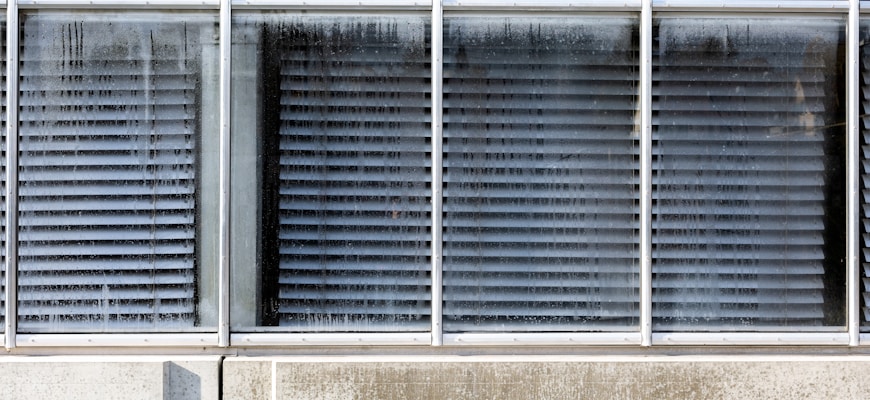- Understanding Indoor Air Quality: Key Factors to Consider
- Simple Changes to Enhance Ventilation in Your Home
- The Role of Houseplants in Purifying Indoor Air
- Effective Air Purifiers: Choosing the Right One for Your Space
- Reducing Indoor Pollutants: Tips for a Healthier Environment
- Maintaining Air Quality: Regular Practices for Long-Term Benefits
Understanding Indoor Air Quality: Key Factors to Consider
Indoor air quality plays a crucial role in maintaining a healthy living environment. Understanding the key factors that influence indoor air quality can help in implementing effective strategies to enhance it. Various elements contribute to air quality, and addressing these factors is essential for ensuring a safe and comfortable atmosphere.
- Ventilation: Proper ventilation is critical for maintaining indoor air quality. It helps to remove stale air and introduce fresh air, reducing the concentration of indoor pollutants.
- Humidity Levels: Maintaining optimal humidity levels is vital for indoor air quality. Excess humidity can lead to mold growth, while low humidity can cause respiratory issues.
- Pollutants: Identifying and managing sources of indoor pollutants, such as volatile organic compounds (VOCs), pet dander, and dust mites, is essential for improving air quality.
- Air Purifiers: Utilizing air purifiers equipped with HEPA filters can significantly reduce airborne contaminants and enhance indoor air quality.
- Regular Cleaning: Regular dusting and vacuuming can help minimize allergens and pollutants, contributing to better indoor air quality.
In conclusion, understanding the various factors affecting indoor air quality is vital for creating a healthier indoor environment. By focusing on ventilation, humidity control, pollutant management, and maintaining cleanliness, individuals can take significant steps toward improving air quality in their living spaces.
Simple Changes to Enhance Ventilation in Your Home
Enhancing ventilation in a home is crucial for improving indoor air quality. Simple changes can significantly impact the comfort and health of residents. Implementing effective ventilation strategies can reduce indoor pollutants and promote a healthier living environment.
- Regularly Open Windows: Allowing fresh air to circulate can greatly improve ventilation. Opening windows for a brief period each day can help expel stale air and bring in cleaner outdoor air.
- Use Exhaust Fans: Installing exhaust fans in kitchens and bathrooms can effectively remove moisture and odors. These fans help to ventilate spaces where air quality may be compromised.
- Install Air Vents: Adding air vents can enhance airflow between rooms. This promotes better circulation and helps to distribute fresh air throughout the home.
- Check HVAC Systems: Regular maintenance of heating, ventilation, and air conditioning (HVAC) systems ensures they operate efficiently. Clean filters and ducts can significantly improve indoor air quality.
- Utilize Air Purifiers: Investing in air purifiers can aid in removing airborne pollutants. These devices can complement existing ventilation methods, providing additional support for better air quality.
By implementing these straightforward changes, it is possible to enhance the overall ventilation in a home. Improved ventilation leads to better air quality, which is essential for health and well-being. Creating a fresh and inviting atmosphere through effective ventilation strategies is a simple yet impactful step for any household.
The Role of Houseplants in Purifying Indoor Air
Houseplants play a significant role in purifying indoor air, contributing to a healthier living environment. These green companions not only enhance the aesthetic appeal of a space but also actively improve air quality. By absorbing harmful pollutants and releasing oxygen, houseplants can create a fresher atmosphere.
- Plants such as spider plants and peace lilies are known for their air-purifying properties. They effectively filter out toxins like formaldehyde and benzene.
- Snake plants and pothos are excellent choices for beginners, as they require minimal maintenance while still offering substantial air purification benefits.
- Incorporating a variety of houseplants can enhance the overall quality of indoor air, as different species target different pollutants.
- Regularly dusting the leaves of these plants ensures they can efficiently process air, maximizing their purifying capabilities.
Moreover, houseplants increase humidity levels, which can alleviate respiratory issues and improve overall comfort. By releasing moisture through a process called transpiration, these plants contribute to a more balanced indoor climate.
In summary, the integration of houseplants into living spaces is a practical and effective strategy for enhancing air quality. By selecting the right species and providing proper care, individuals can enjoy the dual benefits of improved aesthetics and cleaner air.
Effective Air Purifiers: Choosing the Right One for Your Space
Choosing the right air purifier can significantly enhance indoor air quality. Effective air purifiers are designed to remove various pollutants, allergens, and odors from the air, contributing to a healthier living environment. Understanding the essential features and specifications of air purifiers is crucial for making an informed decision.
- Type of Filter: Consider models with HEPA filters, as they efficiently capture fine particles, including dust, pollen, and pet dander.
- CADR Ratings: The Clean Air Delivery Rate (CADR) indicates the efficiency of the air purifier. A higher CADR value means faster air purification.
- Noise Level: For residential spaces, selecting an air purifier with a low noise level ensures a peaceful atmosphere, especially during nighttime.
- Room Size: It’s essential to choose an air purifier suited for the specific room size to optimize air purification performance.
- Additional Features: Many modern air purifiers come equipped with smart technology, such as air quality sensors, timers, and remote controls for added convenience.
Evaluating these factors will help in selecting an effective air purifier that meets the specific needs of any space. Investing in a quality air purifier not only improves air quality but also contributes to overall well-being by reducing exposure to harmful airborne particles.
Reducing Indoor Pollutants: Tips for a Healthier Environment
Reducing indoor pollutants is crucial for maintaining a healthier environment within homes and workplaces. Indoor air quality can significantly impact overall health, leading to various respiratory issues and allergies. Implementing effective strategies to minimize indoor pollutants is essential for promoting well-being.
- Regular Cleaning: Frequent dusting and vacuuming can help eliminate dust mites, pet dander, and other allergens that contribute to poor air quality.
- Proper Ventilation: Ensuring adequate airflow by opening windows or using exhaust fans can help dilute indoor pollutants and bring in fresh air.
- Use Air Purifiers: Investing in high-quality air purifiers equipped with HEPA filters can effectively capture airborne particles, thus improving indoor air quality significantly.
- Limit Use of Chemicals: Reducing the use of cleaning products and air fresheners that contain volatile organic compounds (VOCs) can lower the level of indoor pollutants.
- Choose Natural Materials: Opting for furniture and home decor made from natural materials can help minimize the release of harmful chemicals into the air.
- Houseplants: Introducing indoor plants can enhance air quality as they naturally filter pollutants and increase oxygen levels.
Implementing these practical tips can greatly assist in reducing indoor pollutants, leading to a healthier living environment. By focusing on enhancing indoor air quality, individuals can experience better health outcomes and improved overall comfort in their spaces.
Maintaining Air Quality: Regular Practices for Long-Term Benefits
Maintaining air quality in indoor environments is crucial for health and well-being. Regular practices can significantly enhance the air quality in homes, offices, and other enclosed spaces. Implementing simple yet effective strategies can lead to long-term benefits, ensuring a cleaner and healthier atmosphere.
- Regular Ventilation: Open windows and doors frequently to allow fresh air to circulate. This practice helps dilute indoor pollutants and brings in oxygen.
- Air Filtration: Utilize high-efficiency particulate air (HEPA) filters in HVAC systems to trap allergens and impurities. Regularly replace filters to maintain their effectiveness.
- Houseplants: Incorporate indoor plants known for their air-purifying qualities, such as spider plants and snake plants. These natural filters can absorb toxins and produce oxygen.
- Humidity Control: Maintain indoor humidity levels between 30% and 50%. Use dehumidifiers or humidifiers as needed to prevent mold growth and keep the air comfortable.
- Regular Cleaning: Dust and vacuum frequently to reduce allergens. Use a vacuum with a HEPA filter to ensure that dust and particles are effectively captured.
- Minimize Chemical Use: Choose non-toxic cleaning products and avoid aerosol sprays to limit the release of harmful volatile organic compounds (VOCs) into the air.
- Monitor Indoor Air Quality: Invest in an air quality monitor to keep track of pollutant levels, temperature, and humidity. This data can inform necessary adjustments for healthier air.
These practices not only help in maintaining air quality but also contribute to overall health and comfort. Long-term commitment to these strategies ensures a consistent improvement in indoor air quality, providing a safe and pleasant environment for all occupants.








